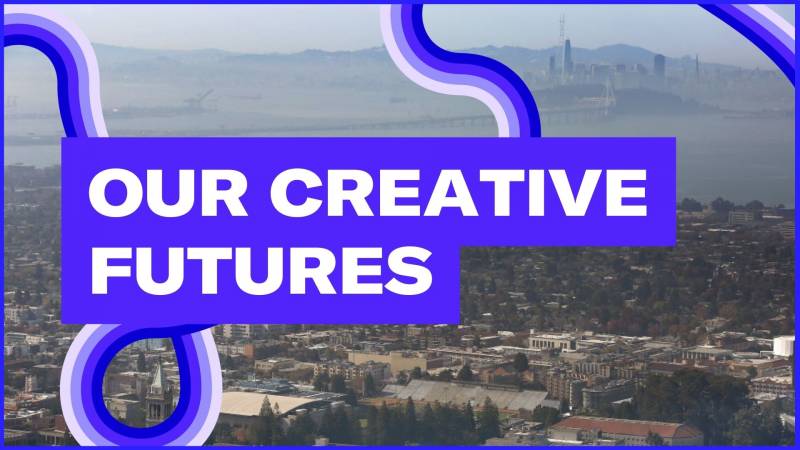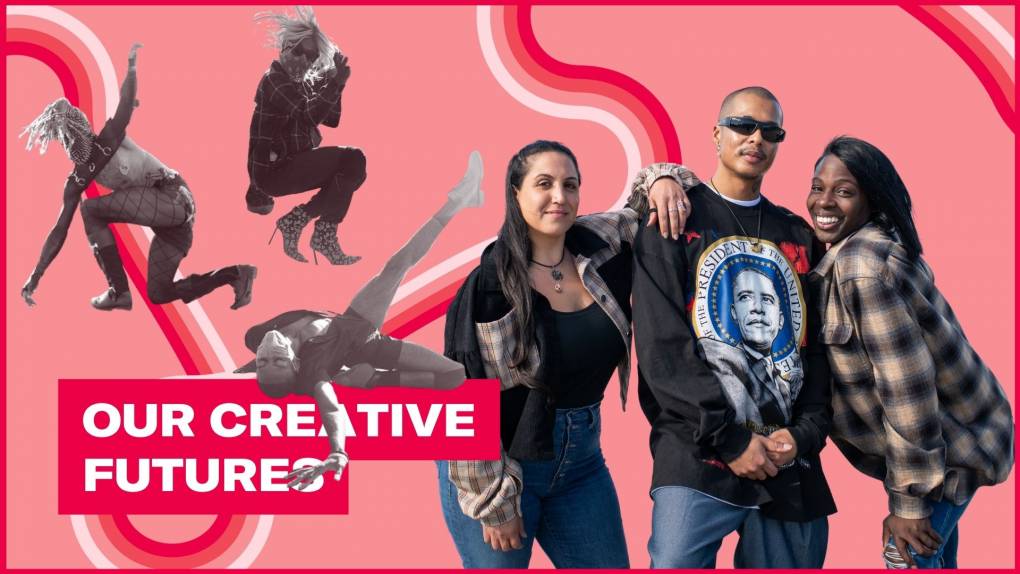Editor’s note: Two years into the pandemic, artists are charting new paths forward. Across the Bay Area, they’re advocating for better pay, sharing resources and looking out for their communities’ well-being. Welcome to Our Creative Futures, a KQED Arts & Culture series that takes stock of the arts in this unpredictable climate. Share your story here.
Building ‘Our Creative Futures’ in the Never-Ending COVID Era

Those of us who’ve been going out lately feel like our eyes are too big for our stomachs. We want to stand by the speakers at concerts and feel the bass rattle our rib cages. We want to see all the art, whether it’s in formal theaters or garage galleries. We want to try all the foods and give all the hugs.
Yet [cue sound of deflating balloon], as the Bay Area hits its fifth COVID-19 surge, a blend of anxiety, fatigue and grief have tempered all this excitement. Even though California’s economy reopened last summer, independent artists are nowhere near a full recovery. And without a social safety net, artists have to fend for themselves in this unpredictable climate.
But because artists possess the gift of making something out of nothing, examples of their ingenuity abound in all corners of the Bay Area. This week in Our Creative Futures, you’ll read about mutual aid networks, new economic models and volunteer efforts to keep the arts thriving and sustainable.
With few public health measures against COVID-19 still in place, artists have to make difficult tradeoffs. You inevitably risk spread when your profession involves packing strangers into rooms. Not only is that dicey from a health perspective, for gigging artists who’ve lost significant income over the past two years, the prospect of illness is destabilizing when trying to get your career back on track.
The arts bring communities closer and offer us spiritual relief, and there’s an economic case for supporting them as well. A healthy arts ecosystem equals a healthy overall economy: When people go out to concerts, museums and plays, they patronize restaurants, bars and other small businesses, and help neighborhoods thrive. According to the 2022 Otis College Report on the Creative Economy, California’s creative industries contributed 23% to the state’s GDP in 2020.

Unsurprisingly, the report found that the fine arts and performing arts were hit the hardest at the start of the pandemic. Those sectors experienced a 20% drop in employment that year, reversing the progress made in the 14 years since the Great Recession.
Statewide, the average self-employed fine or performing artist makes only $36,200 a year. That’s barely enough to pay rent and eat in the Bay Area, which makes every missed couple-hundred dollars significant. Other jobs that have traditionally bolstered artists’ income—like food service, driving rideshares and teaching—come with their own COVID risks that can lead to further setbacks.
Artists make our cities livelier, open us to new ideas and provide much-needed light amid all this darkness. They’re pressing on, sometimes at great personal cost. We shouldn’t take that for granted, and nurture them, support them and celebrate them.

Read more stories from Our Creative Futures here. Have something to share? Tell us about how the pandemic has impacted your art practice or community.

